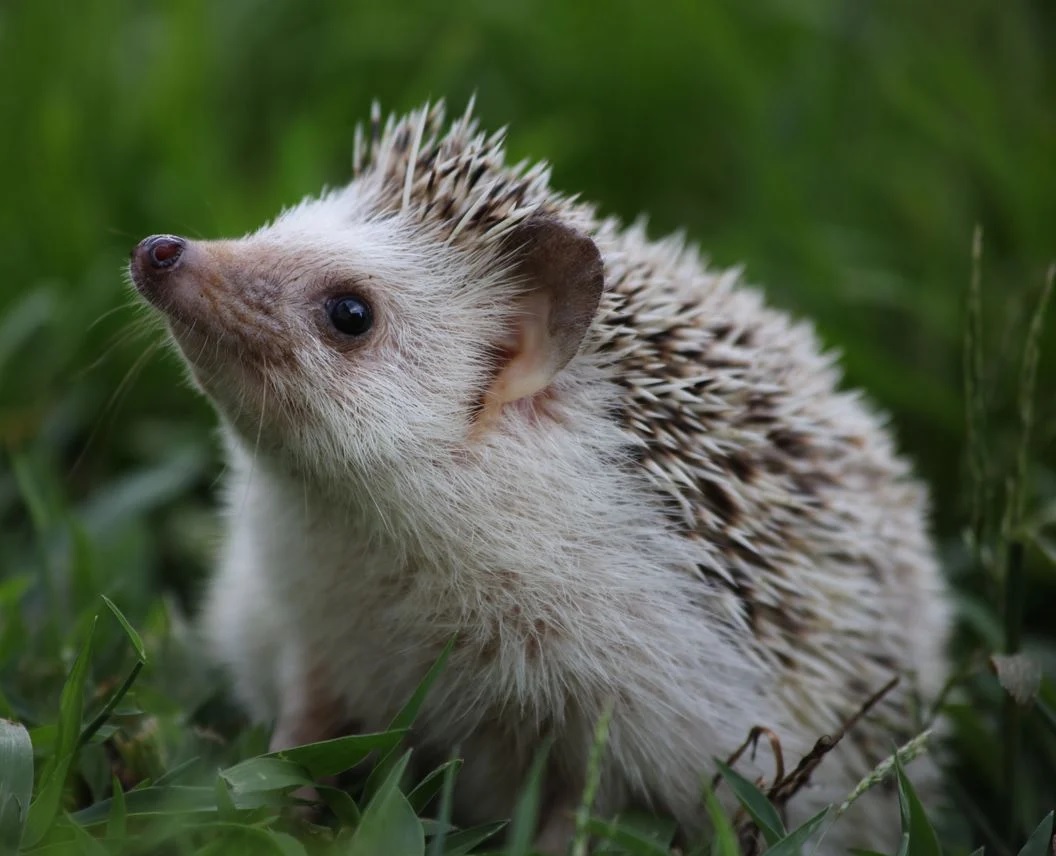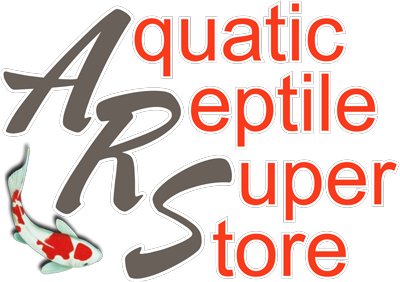African Pygmy Hedgehog
Atelerix albiventris

Also called the Four-Toed Hedgehog, these spiky little mammals hail from the open plains and grasslands of Central, West, and East Africa.
Nocturnal in nature, they can travel several miles in a single night on their never-ending search for invertebrates or small snakes to eat.
They have been shown to have a very high tolerance for toxins, being shown to consume venomous snakes and scorpions despite the danger.
Latin Name – Atelerix albiventris
Difficulty Level – Intermediate
Temperament – Docile, although may react with defensive snorts, huffs, and hisses. They can also curl into their trademark spike ball.
Life Span – 4 – 6 Years is typical, although specimens reaching up to 10 years have been recorded.
Size – 13cm – 30cm ¦ 400g – 1.1Kg – Females tend to be larger than the Males.
Habitat – Dry Grassland, Open Plains, Savannah
Diet – Be sure to give your Hedgehog fresh food and water daily.
Feed with Specialised Hedgehog Food. You can include chopped fruit and veg at each feeding, offered in a separate bowl.
Provided a low sided bowl for both food and fresh drinking water.
Safe Fruit & Veg – Watermelon, Apples, Banana, Berries, Peaches, Cucumber, Broccoli, Bell Pepper, Peas, Leafy Greens, Tomatoes, Green Beans.
Other Food – Eggs – Boiled / Scrambled, Unseasoned Boiled Meat (especially chicken), Invertebrates such as mealworms and locusts. Although they are insectivorous in the wild, these are very fattening and can easily lead to obesity in pet Hedgehogs. Only feed as a treat.
Food to avoid – Raw Meat, Milk, Bread, Avocado, Citrus Fruit, Grapes, Raisins, Nuts, Seeds, Onions, Spicy Food.
Cat Food – Although it used to be considered the norm to feed Hedgehogs with cat food, this is no longer recommended. If you must feed with cat food, be sure to choose a no-grain variety.
Hours of Activity – Nocturnal – These Hedgehogs are most active at nighttime, waking up at dusk and sleeping from dawn.
Handling – With training, these Hedgehogs can learn to enjoy being handled by a trusted person. Don’t assume your Hedgehog comes ready-trained. Start slowly and build up the amount of handling gradually.
Temperature – Between 24°C – 30°C – Any colder and the Hedgehog may begin to hibernate, as much hotter than 30°C can cause it to go into estivation.
Housing – These Hedgehogs prefer to be kept alone, as they are solitary animals. Ensure that the enclosure is 3 Feet Wide X 4 Feet Long at the very minimum. It should have a smooth floor with a tight-fitting mesh lid to encourage adequate air flow. The walls can either be smooth, such as glass, or fine wire mesh. Do not use mesh for the flooring as it can cause injuries to their feet.
Keep their enclosure somewhere that doesn’t fluctuate too much in temperature, and that is quiet and preferably dimly lit.
Substrate Type – Wood shavings, Sawdust, Shredded Newspaper, Straw. Be sure not to use cedarwood shavings as this can be toxic.
Equipment Necessary – Enclosure, Food Bowl, Water Bowl or Water Bottle, Thermometer, Places for the Hedgehog to hide and sleep such as hollow decorative rocks or tunnels.
Cleaning Instructions – Spot clean any waste and uneaten food daily. Be sure that the substrate is clean. Once per week, the enclosure should be completely cleaned. This means removing the substrate and clean with a pet safe disinfectant. If your chosen substrate is cloth based, then be sure to wash it before putting it back. Replace any wood shavings or sawdust completely. Clean the food and water bowls and wipe down any toys and exercise equipment.
If you need to clean your Hedgehog for any reason, then an oatmeal bath is often the best option. This can be done in the sink with over the counter, supermarket oatmeal cereal.
Fill the sink up to around 10cm – 15cm deep, with lukewarm water. Place some of the oatmeal into a filter bag or sock, and either run the water through it as you are filling the sink or tie the end of the bag and squeeze it into the water. The aim is to not get any of the oats into the water, but to get the water a milky colour from the oat’s nutrients.
Once your oat water is adequately milky, support your Hedgehog with one hand and gently scoop the water over its body. Do this for around 3 minutes, and then put the Hedgehog somewhere warm to dry off. Do not rinse. The Hedgehog is likely to make a fuss during its bath so don’t be overly concerned with angry hisses or other such noises.
You should only perform an oatmeal bath once per month, as any more can risk drying their skin.
As an alternative to an oat bath, you can opt for a very mild kitten shampoo (again, once per month). Ask the advice of your vet if you are unsure.
Healthy Behaviour – Feeding well, Able to curl into a ball completely, Displaying supple skin with no crust or flakes, Sleeping in the day time and coming out at night to explore and forage, Exercising frequently on provided equipment.
Sick Behaviour – Lethargy, Wobbling (See below for WHS symptoms), Relucance to engage with their handler, Loss of quills, Not feeding, Weight loss, Skin in a poor condition – Including any visible sores.
Enrichment Toys – Be sure to provide your Hedgehog with toys to prevent them from becoming bored. These can range from balls to play tunnels, and have been shown to vastly improve the quality of life of the Hedgehog.
Exercise Wheel – Most Hedgehog keepers will tell you that an exercise wheel is of paramount importance. Not only is it enriching for the Hedgehog, but also helps them to run off the energy that would otherwise be spent foraging in the wild. It will fast become your Hedgehog’s favourite thing, and they can spend hours at a time running on it.
As they are nocturnal, you should invest in a quieter wheel to avoid disruption of your own sleep, due to the Hedgehog’s relentless scampering.
When you purchase an exercise wheel, be sure it is of the correct size that your Hedgehog can exercise comfortably within it.
Bonding – Hedgehogs learn trust by scent and association. The more you handle and interact with your Hedgehog, the faster it will bond with you. Never force a Hedgehog that obviously doesn’t want to be handled, and don’t manhandle them. Allow the Hedgehog to come to you, then gently hold it in your lap for a short time as you watch tv or another stationary activity.
You can also purchase a wearable pouch to carry the Hedgehog close to your body. This assists in getting them familiar with your scent in a safe and comfortable location.
Common Problems – Obesity – In the wild, these Hedgehogs expend their energy with their avid foraging habits, burning off the fat from the densely calorific insects that they eat.
As pets, they have no need to forage so feeding them too much can easily lead to obesity. Pygmy Hedgehogs are gluttons and will eat food wherever they can get it.
Care must be taken to provide them with a balanced, nutritious diet and enough room to exercise, preferably with an exercise wheel.
Quilling – This is less of a health issue, than something that all Hedgehogs go through several times throughout their lives. It is the time when the old quills (spikes) are replaced with new ones. Your hedgehog can look patchy or bald during this time, and they can be seen to scratch and be irritated by discomfort as the new quills are erupting through their skin. If your Hedgehog seems to be a little more grumpy than usual, it could be the start of quilling. To soothe the Hedgehog’s skin, you can give them an oatmeal bath as outlined above.
Quilling is much more frequent in young Hedgehogs, but it remains important to keep handling them if they are Hoglets, so that they can get used to your scent and bond with you.
Wobbly Hedgehog Syndrome (WHS) – This is a degenerative neurological disease that affects around 10% of pet African Pygmy Hedgehogs. It is thought to be genetic, caused by the limited bloodlines amongst the captive bred population.
Symptoms will first display themselves as a wobble when the Hedgehog is standing still. Over a period of weeks to months, their muscle control will gradually deteriorate from the back to the front and eventually they will be rendered immobile due to paralysis. Unfortunately, there is no cure for WHS, and the kindest thing would be to have a veterinary professional euthanise them to avoid prolonged and unnecessary suffering. Most Hedgehogs with WHS don’t survive longer than 2 years.
Regarding treatment, although there is no cure, some vitamin supplements, antibacterial and steroid treatments have been shown to temporarily delay the disease’s progression. The advice of your vet should be sought, instead of trying to treat by yourself.
Mange and other Skin Infections – This is most often caused by poor animal husbandry. Contact your vet for treatment options and be sure that the Hedgehog’s living space is properly cleaned and maintained.
Dental Problems – These can be caused by feeding your Hedgehog a diet that is too rich in sugars. Cut down on the sugary fruits and treats that you feed your Hedgehog and contact your vet for treatment.
Anointing – Less of a problem, but more of a quirk of their behaviour. When a Hedgehog is introduced to a new food or even a strong new scent for the first time, they will whip their saliva up into a froth in their mouths, and then smear it all over their back. This can be a little jarring the first time you see it, but it is a perfectly normal Hedgehog behaviour. No one is 100% sure why they do this, but experts think it is either a form of stress relief, or a defensive measure.
Loss of Quills – This can be due to several factors including stress, parasites, and poor diet. If you know that your Hedgehog has been feeding well with a nutritious and balanced diet, then check their body for mites. If mites are discovered, contact your vet for treatment options. If no parasites are found, then question whether their enclosure is in the right spot. Perhaps it is too noisy or brightly lit, which can lead to stress. If none of the above, contact your vet for advice.
